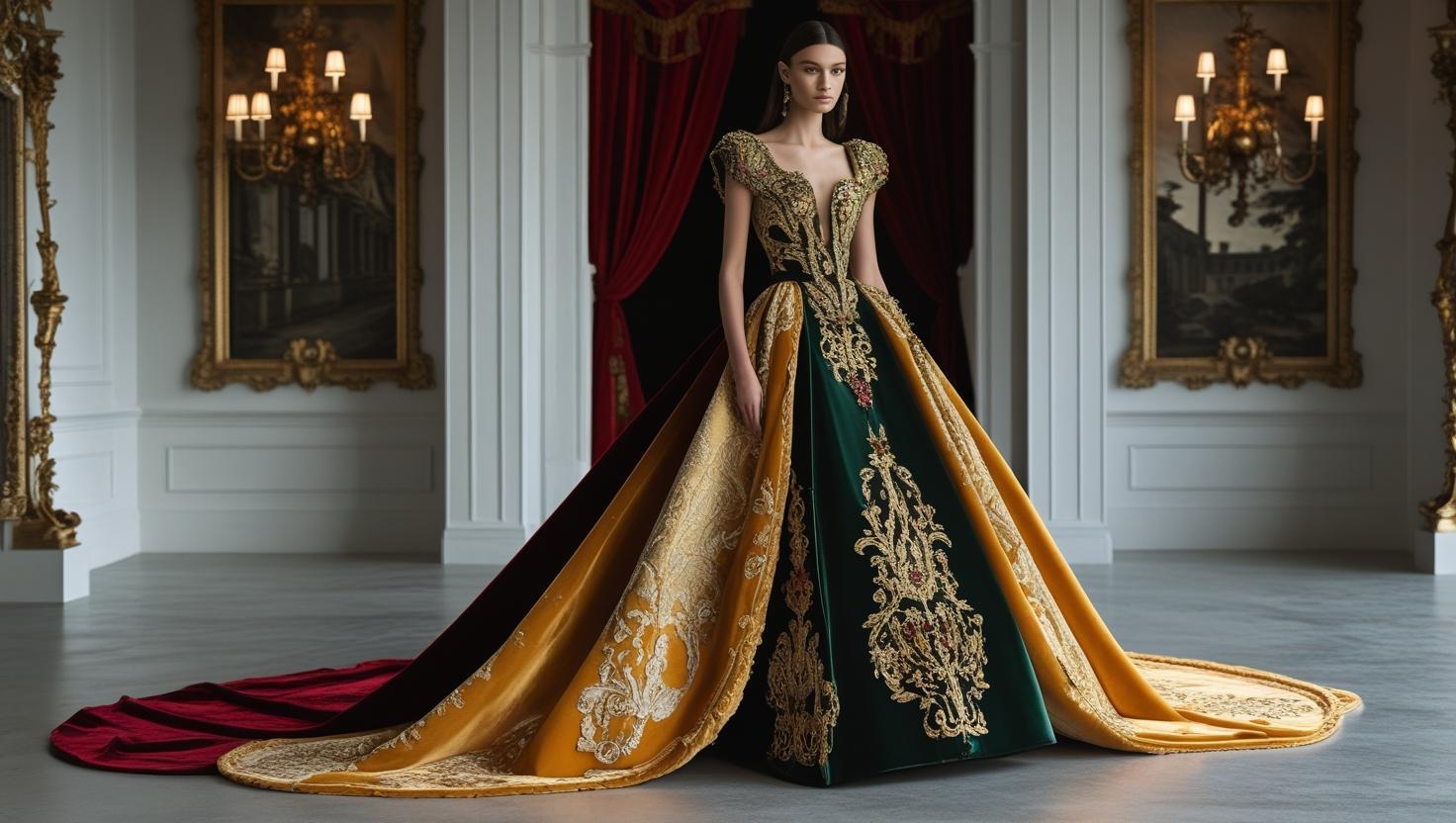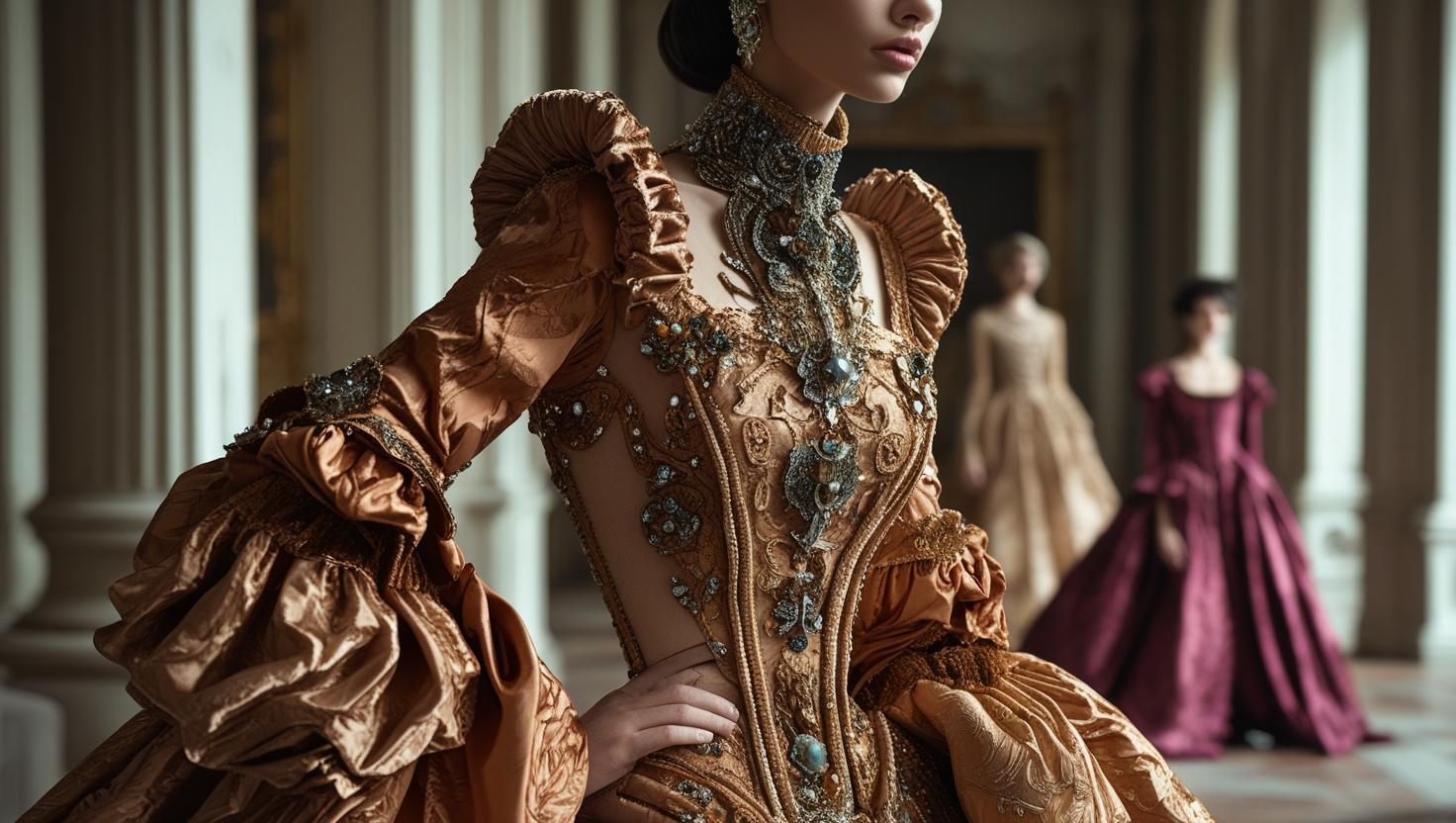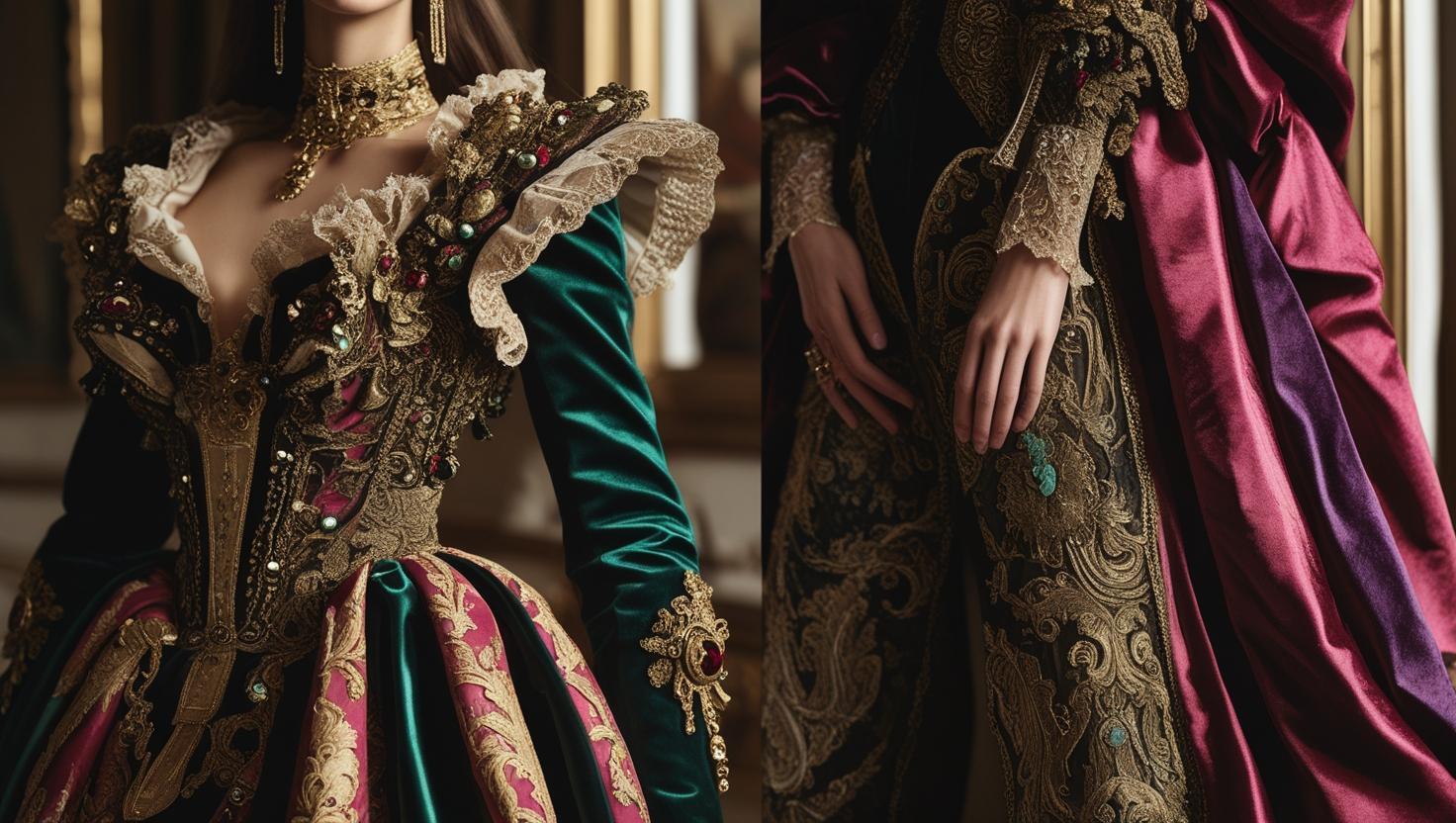7th Jul 2025
Baroque Revival: How Designers Are Reimagining 17th-Century Opulence for 2025

There's a bold resurgence in fashion where 17th-century opulence meets modern design, inviting you to explore the Baroque Revival trend for 2025. As a style enthusiast, you’ll discover how designers are blending intricate details, rich textures, and dramatic silhouettes to create looks that are both luxurious and contemporary. This revival challenges traditional minimalism, urging you to embrace extravagance and artistic expression in your wardrobe. By understanding this movement, you can confidently incorporate timeless elegance into your personal style, staying ahead in the evolving fashion landscape.
The Allure of Baroque: A Historical Perspective
The Baroque era dazzled Europe with its dramatic interplay of light and shadow, intricate ornamentation, and an unmistakable grandeur that spoke volumes about power and prestige. Rooted in the 17th century, this style emerged not just as art or architecture, but as a multisensory experience designed to evoke awe. When you consider its revival in today’s fashion, it’s clear that designers draw on this era's passion for extravagance to create pieces that feel both timeless and intensely modern.

Defining Baroque Aesthetics and Values
Baroque aesthetics thrive on contrast, movement, and emotional intensity, combining elements like gilded details, swirling motifs, and bold color palettes such as deep golds and royal blues. Values like theatricality, opulence, and sensory richness define the style’s distinctiveness. You’ll find these principles echoed in today’s designs through lavish fabrics, intricate embroidery, and layering that transforms garments into statements of power and artistry.
The Cultural Significance of Opulence in the 17th Century
In the 17th century, opulence was more than decoration—it served as a language of authority and divine right. Monarchs like Louis XIV used Baroque extravagance to reinforce political control and religious ideology, filling palaces with dramatic sculptures, ceiling frescoes, and ornate furnishings. For you, understanding this cultural backdrop deepens appreciation for how contemporary designers use similar symbols to convey status and identity in their collections.
Delving deeper, the Baroque period’s emphasis on luxury also reflected the era’s social dynamics. The church and aristocracy invested heavily in commissioning grand art and architecture not only to awe the public but to assert their dominance during times of political uncertainty. You see this in iconic examples such as the Palace of Versailles, where every detail—from massive crystal chandeliers to intricate ceiling paintings—played a role in projecting unassailable power. Modern fashion channels this legacy by transforming ornamental excess into wearable narratives, inviting you to engage with history through texture and form.
Reviving the Grandeur: Modern Interpretations in Fashion
Designers today are breathing new life into Baroque opulence by infusing its lavish details with contemporary silhouettes and innovative fabrics. You’ll notice intricate embroidery, bold gilded accents, and voluminous shapes being reimagined in wearable, updated ways that resonate with 2025’s aesthetic sensibilities. This revival isn’t just about replication—it’s about creating garments where past grandeur meets present-day functionality, allowing you to experience the drama and richness of the 17th century without sacrificing modern comfort or relevance.
Notable Designers Embracing Baroque Elements
You can spot the influence of Baroque artistry in collections by brands like Dolce & Gabbana and Alexander McQueen, both known for their theatrical and richly detailed designs. Dolce & Gabbana’s Fall 2024 line featured ornate jacquard fabrics and baroque-inspired gold brocade, while McQueen introduced corseted bodices paired with exaggerated ruffles and lush metallic threadwork. These designers embrace Baroque’s theatricality, inviting you to explore fashion as an immersive, storytelling experience through their bold use of historic motifs.
Key Pieces Reflecting 17th-Century Influences
Look for statement pieces such as embroidered velvet coats, corset-style tops, and pleated ruffle collars that draw directly from Baroque silhouettes. Accessories like oversized pearl chokers, lavish, jewel-encrusted belts, and ornate buttons complete the look, echoing the sumptuous detail work of the era. These items serve as focal points in contemporary wardrobes, merging the grandiosity of 17th-century design with the versatility you desire today.
Beyond aesthetics, these key pieces often integrate modern tailoring and fabric technologies, ensuring you don’t just wear history but also experience comfort and durability. Velvet, traditionally heavy and cumbersome, is now lighter and stretch-infused, while embroidery employs techniques that secure delicate threads for everyday wear. This fusion allows you to make a powerful style statement grounded in Baroque richness, but tailored for the demands of your modern lifestyle.
The Intersection of Sustainability and Extravagance
You might think luxe baroque aesthetics and eco-conscious values clash, yet designers are weaving sustainability directly into opulent creations. By prioritizing environmental responsibility while maintaining lavish details, they transform extravagance into a deliberate statement of care. This approach challenges you to rethink what luxury means—not just being visually grand, but also ethically grounded in every stitch and surface.
Eco-conscious Design: Merging Luxury with Responsibility
Sustainability in baroque-inspired fashion often means sourcing organic silks, using natural dyes, and adopting zero-waste cutting techniques. Brands like Stella McCartney fuse ornate embroidery with recycled fibers, proving extravagance can align with your eco-values. You get richly detailed pieces that respect the planet, embracing craftsmanship without compromising ethics.
Innovations in Materials Inspired by Baroque Craftsmanship
Modern designers draw from 17th-century artisanal techniques, reinventing them with sustainable materials like lab-grown pearls and bio-based metallic threads. These materials mimic traditional opulence while slashing environmental impact, offering you ornate finishes that don’t cost the earth. This fusion pushes luxury beyond appearance, into tangible innovation.
Take lab-grown pearls, for instance—created through controlled cellular processes, they maintain the lustrous appeal of natural pearls but eliminate harmful harvesting practices that damage marine ecosystems. Likewise, bio-based metallic threads derived from sustainable sources replicate the shimmering gold and silver embroidery so beloved in baroque attire, yet significantly reduce reliance on mining. These advances not only preserve the visual grandeur you expect from baroque style but also embed the values of circularity and ethical production into each garment, inviting you to embrace lavishness mindful of tomorrow’s planet.

The Influence of Digital Media on Baroque Revival
Digital media has accelerated the Baroque Revival by amplifying designers’ creative risks and allowing you to engage directly with emerging trends. Online platforms magnify the intricate details and dramatic flourishes that define Baroque-inspired collections, making them more accessible and shareable. You witness how influencers reinterpret layered textures and ornate patterns in street style, while digital storytelling lets brands weave historical references into modern narratives. This fusion is rewriting luxury fashion codes in real time, with visual content shaping the revival’s evolution faster than traditional print could manage.
How Social Media Shapes Fashion Trends
Social media platforms like Instagram and TikTok have become arenas where Baroque Revival aesthetics flourish, influencing your style choices daily. Stylists and celebrities showcase opulent embroideries, voluminous silhouettes, and gilded accessories through viral posts and reels. Hashtags such as #BaroqueRevival and #ModernOpulence generate over 500K posts, guiding you toward emerging designers who blend 17th-century grandeur with contemporary flair. These platforms empower you to spot microtrends early, transforming Baroque's lavishness from museum inspiration to streetwear-ready statements almost overnight.
Virtual Fashion Shows and the Baroque Aesthetic
Virtual fashion shows have redefined how you experience Baroque Revival collections, immersing you in digitally crafted environments that echo the opulent settings of the 1600s. Brands like Dolce & Gabbana and Balmain have harnessed 3D technology and augmented reality to stage shows within virtual palaces and gilded halls. This tech-driven approach enhances the dramatic impact of Baroque details, creating an intimate yet grand spectacle that deepens your connection with the collection beyond conventional runway viewing.
Expanding on this, virtual fashion shows not only replicate Baroque grandeur but also enable interactive experiences that traditional catwalks can’t offer. You can explore garments through 360-degree views, zooming in on intricate lacework or metallic stitching that define Baroque opulence. Some shows pair digital avatars wearing Baroque-inspired pieces with immersive soundscapes and lighting effects, intensifying the emotional resonance. The fusion of technology and historical aesthetics invites you to navigate the past and present simultaneously, redefining luxury consumption in a hyperconnected world.

Consumer Reception: Embracing or Rejecting Opulence?
The resurgence of Baroque-inspired luxury elicits a mixed response among consumers, with some eagerly embracing its lavish details as a statement of individuality, while others shy away from what they perceive as excess. Younger buyers, in particular, navigate this fine line, balancing their desire for ornate aesthetics with evolving values around sustainability and minimalism. How you engage with these designs often reflects a broader dialogue between honoring heritage and adapting to contemporary lifestyles, making consumer reception an ever-shifting dynamic in the luxury market.
Trends in Luxury Consumer Behavior
Younger luxury consumers increasingly prioritize authentic storytelling and craftsmanship, gravitating toward pieces that blend historical grandeur with modern relevance. Limited editions and collaborations that reference Baroque motifs tend to perform well, especially when paired with personalized experiences or digital engagement. Meanwhile, traditional buyers maintain a steady interest in the tactile richness of opulent textures, signaling that despite shifts, the appetite for grandeur remains intact.
The Role of Nostalgia in Modern Purchasing Decisions
Nostalgia acts as a powerful motivator, guiding you toward luxury items that evoke emotional connections with the past. Baroque revival taps into this sentiment by reintroducing elaborate patterns and ornamental flourishes reminiscent of grandeur's golden eras. Brands leveraging this emotional tie find success in crafting narratives that resonate deeply, enhancing perceived value and encouraging purchases rooted not only in style but in memory and identity.
The intricate appeal of Baroque revival extends beyond surface aesthetics, reaching into your subconscious attachments to history and tradition. You might find yourself drawn to pieces that recall the artistry and drama of 17th-century opulence because they offer a sense of continuity amidst rapid modern change. Studies reveal that consumers often justify high-end purchases by linking them to tangible heritage or personal milestones, which explains why brands emphasizing storytelling and provenance see rising engagement. This interplay between nostalgia and luxury design transforms buying into an experience, where each item becomes a vessel of legacy rather than mere fashion.
Final Words
Now, as you explore the Baroque Revival trend, you’ll see how designers skillfully transform 17th-century opulence into modern elegance that fits your contemporary style. By blending intricate details with fresh creativity, this revival invites you to embrace rich textures and bold ornamentation in a way that feels both timeless and innovative. Your wardrobe and spaces can reflect this dynamic balance, allowing you to connect with historical grandeur while expressing your unique aesthetic for 2025.
